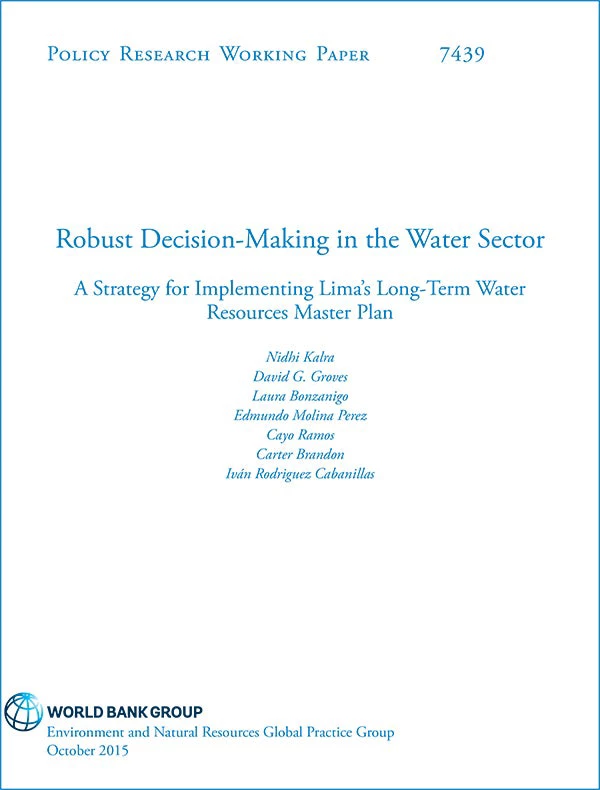
Photo Credit: Andrew Howson / Creative Commons
How can water resource agencies make smart investments to ensure long-term water reliability when the future is fraught with deep climate and economic uncertainty? Water resource agencies around the world are grappling with this question at a time of unprecedented water stress, growing demands, uncertain climate change, and limited budgets. We helped SEDAPAL, the water utility serving Lima, Peru, answer this question by drawing on state of the art methods for decision making under deep uncertainty.
Lima is home to approximately 9.8 million people. It is the fifth largest metropolitan area in Latin America. With average precipitation of just 6 mm per year, Lima is also the second largest desert city in the world. A rapidly growing population with approximately one million underserved urban poor, current water shortages, competition for water between sectors, wide rainfall variation due to El Niño effects, and long-term climate change impacts may leave the region under perpetual water stress.
Recognizing the urgency of Lima’s water situation, SEDAPAL has developed an aggressive multi-billion dollar Master Plan to implement 14 large and diverse infrastructural investments projects between now and 2040 at a total cost of US$2.7 billion. Together, the investments are designed to meet the 30 percent increase in water demand that SEDAPAL projects for the coming decades.
Consistent with the state of practice at many water utilities, SEDAPAL developed its Master Plan by projecting future demands based on recent socioeconomic trends and by projecting future water supply based on historical climate conditions. Yet the continuation of these historic demand and supply trends is by no means certain. This raises important questions for decision makers concerned with water reliability in Lima:
- Are the capital projects in the Master Plan sufficient to ensure reliability in the face of deeply uncertain future climate change and demand?
- On the other hand, are all proposed projects necessary to achieving reliability?
- Many projects are challenging to implement—how should considerations of project feasibility shape the city’s investment strategy?
- Ultimately, how should projects be prioritized? Which should be implemented now, which can be delayed, and what specific indicators would trigger their implementation?
- It is no-regret. It identifies investments and projects that are useful no matter what the future brings;
- It is adaptive. It guides decision makers on how to implement future investments as conditions evolve and today’s uncertainties are reduced.
Upon completion, the study helped SEDAPAL realize that not all projects included in its Master Plan were necessary to achieve water reliability, and that it could save 25 percent (over $600 million) in investment costs. It also helped focus future efforts on demand side management, pricing, and soft infrastructure – a refocusing that is sometimes difficult in traditional utility companies. Third, it helped SEDAPAL gain the confidence of regulatory and budget agencies due to the careful analysis of alternatives. And finally, it allows them to implement its Master Plan robustly by identifying near-term, no-regret projects that it can embark upon now, while pursuing additional actions adaptively as future conditions evolve.
The lessons learned go beyond this Lima pilot. More and more cities are facing water stress due to unprecedented climate change and urbanization. More and more regions are experiencing conditions that are not simply extrapolations of past trends – such as flooding, transport bottlenecks, energy shortages, and construction delays. Planning in the face of these situations can be improved by using techniques designed for decision-making under uncertainty. These techniques will become more commonly used in many sectors - including water, transport, energy, flood management and urban development - for good reason.
A recently published World Bank Policy Research Working Paper includes more information on the Lima water study. The Bank has also released a new methodological book that helps program managers demonstrate the robustness of their projects to climate change uncertainty.
Related links:
Feature Story: Thirsty Lima Uses Robust Planning to Address Its Future Water Needs
Publication: Robust decision-making in the water sector: a strategy for implementing Lima’s long-term water resources master plan






Join the Conversation